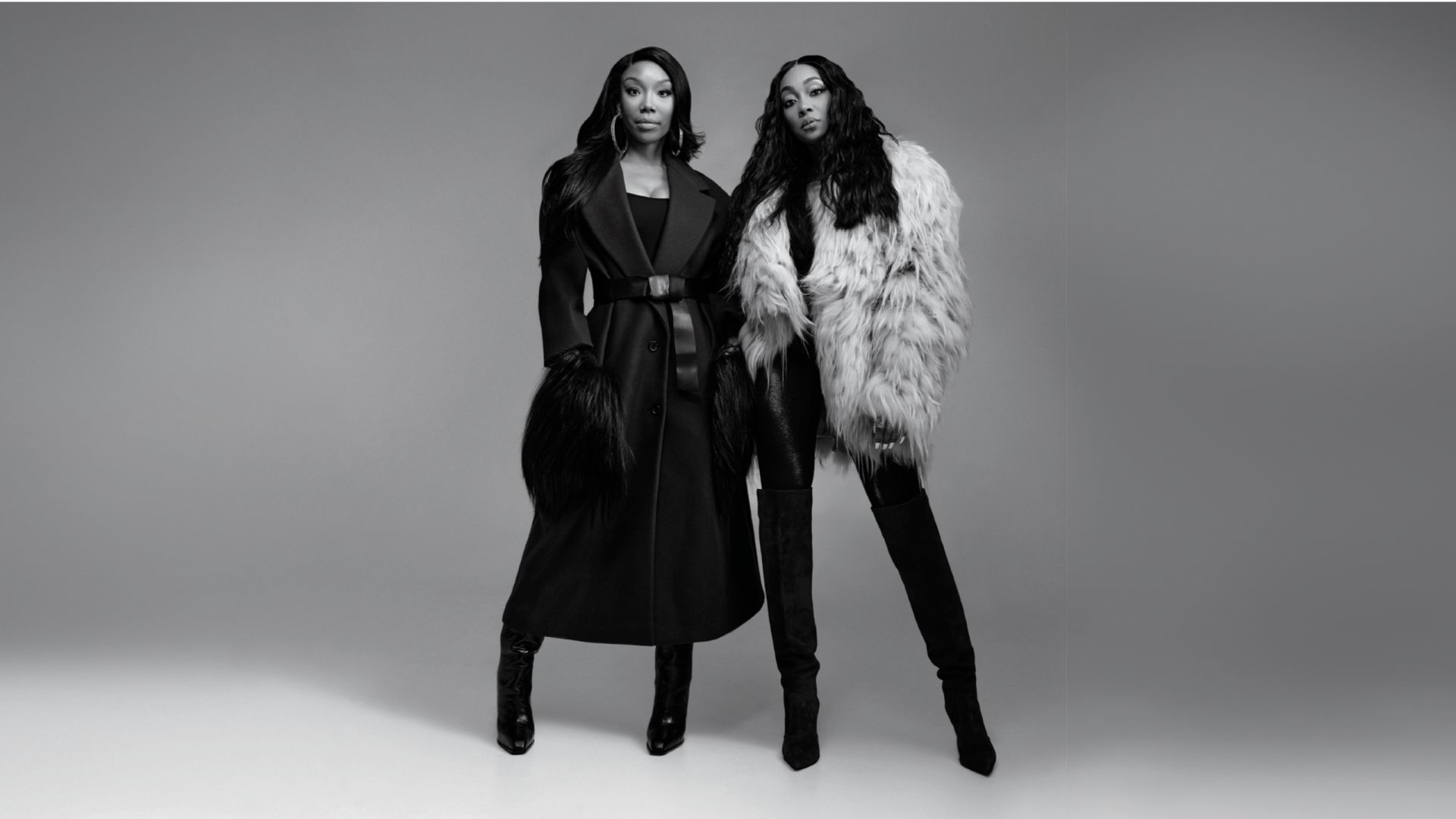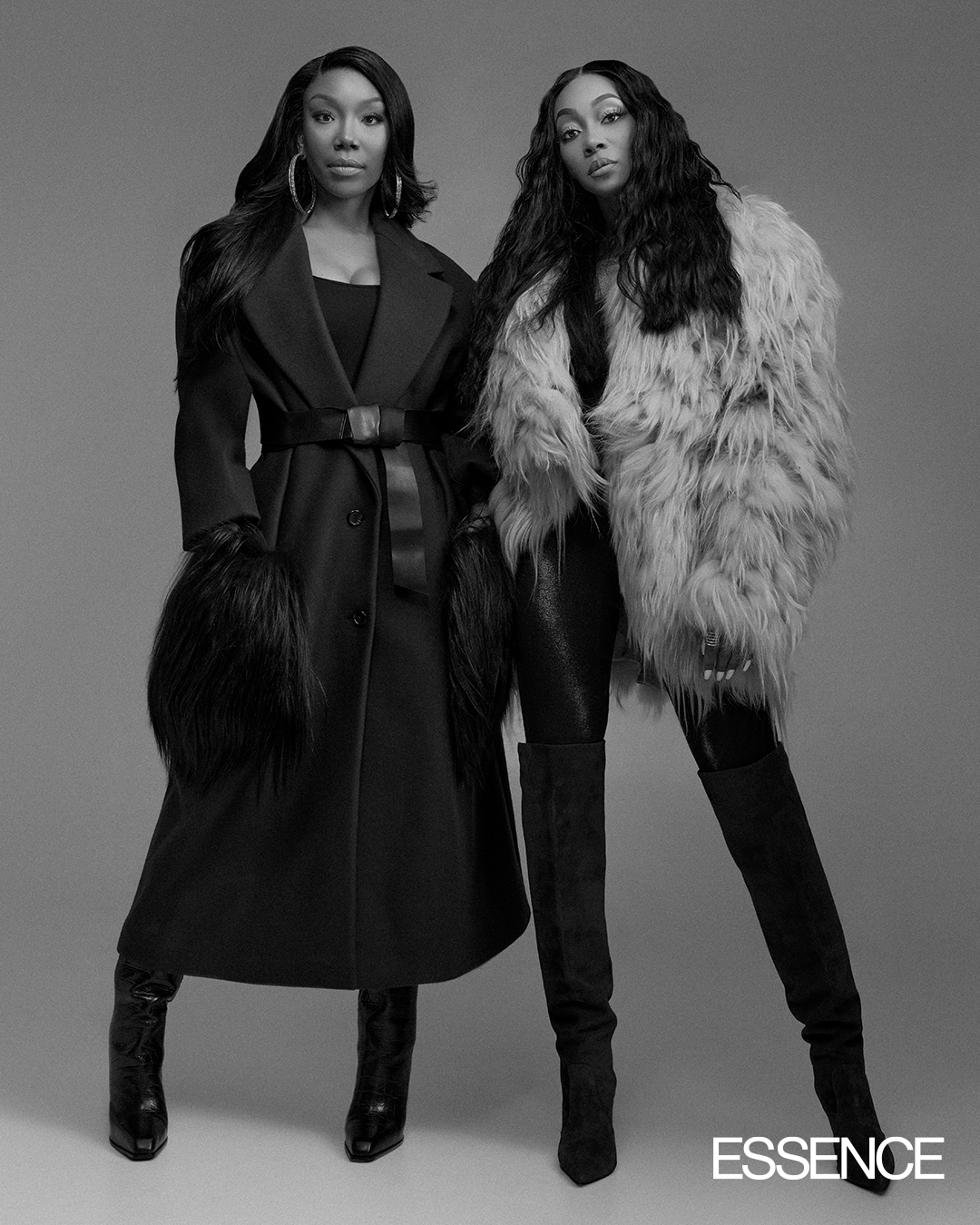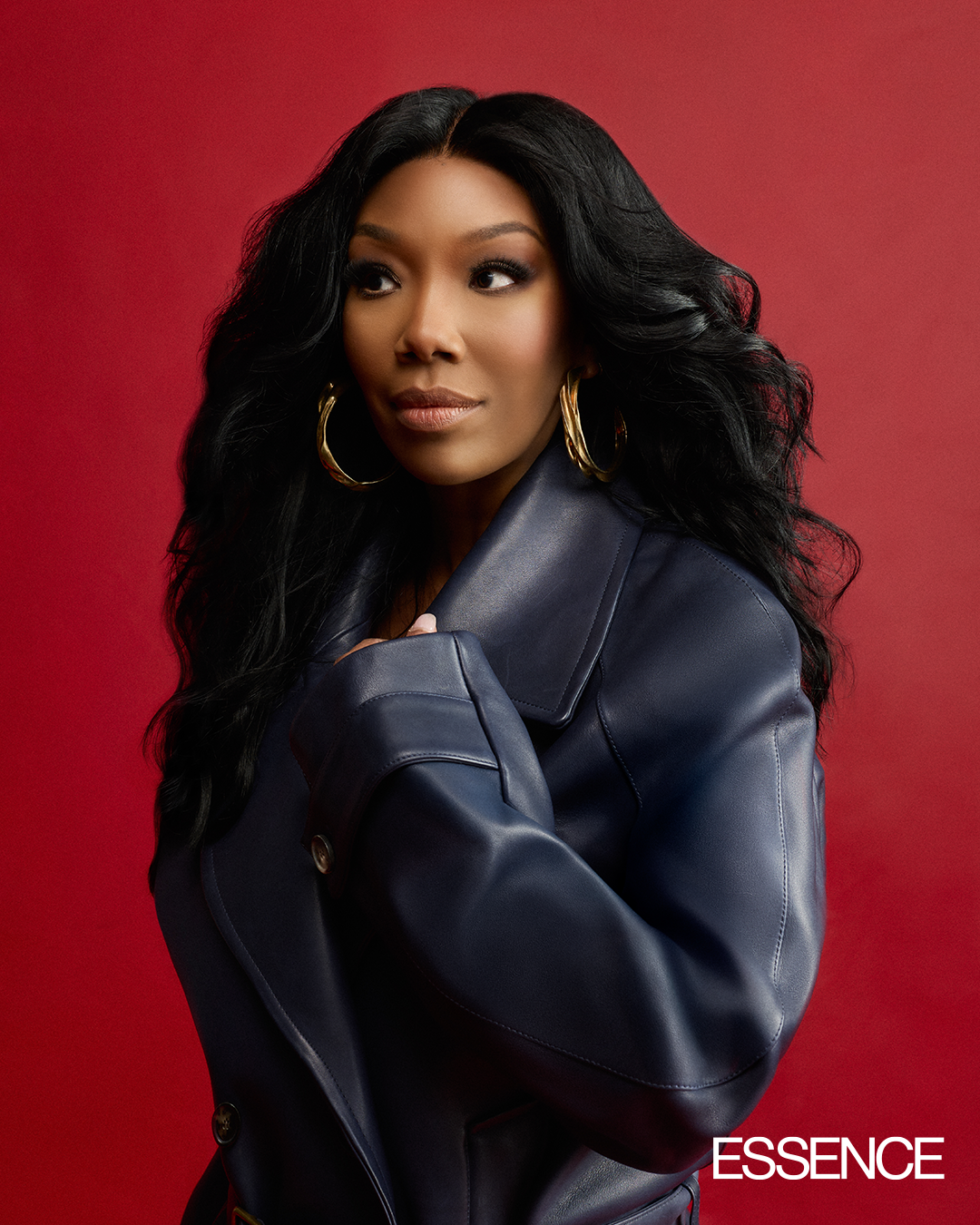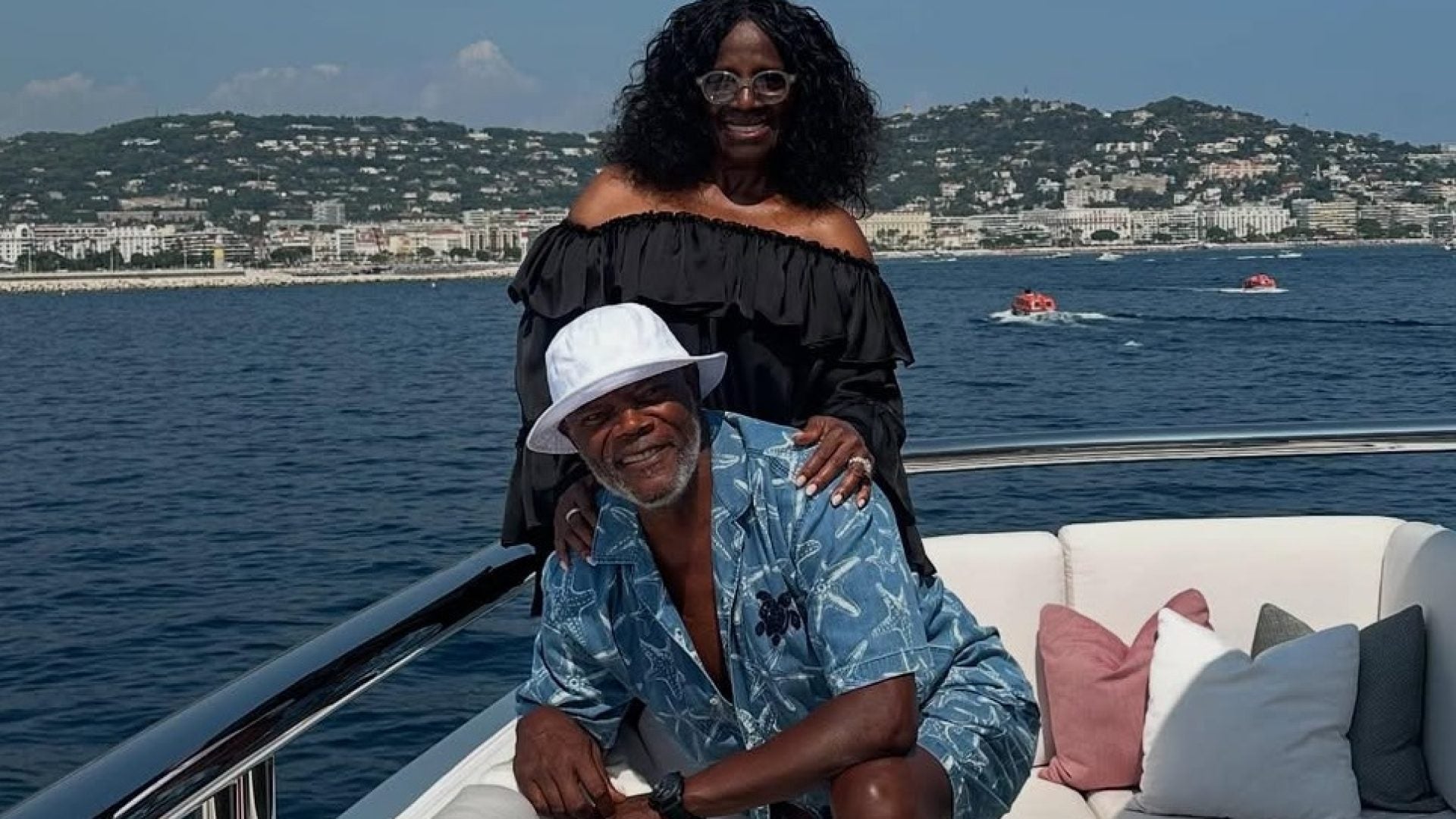The Moment Is Theirs
They came in as bright-eyed young girls with grown voices. Brandy Norwood from Carson, California, Monica Arnold from Atlanta. One raised in the West Coast suburbs, one straight out the […] The post The Moment Is Theirs appeared first on Essence.

 Photography by Myesha Evon Styling by Jason Rembert
Photography by Myesha Evon Styling by Jason Rembert They came in as bright-eyed young girls with grown voices. Brandy Norwood from Carson, California, Monica Arnold from Atlanta. One raised in the West Coast suburbs, one straight out the Dirty South. Two differentsrc="https://www.essence.com/wp-content/uploads/2025/09/Cover_1080x1350_WP.png" alt="The Moment Is Theirs " width="400" height="500" />The Moment Is Theirs. Brandy Norwood and Monica Arnold cover ESSENCE Fall/Winter 2025.Photography by Myesha Evon Styling by Jason Rembert
From the start, the machine wanted a story bigger than the music. Brandy vs. Monica; the sweet Cali girl with braids vs. the Southern spitfire with edge. It was a rivalry the culture didn’t ask for but the press fed and the labels let ride. Before the two even had time to understand themselves, the world was ready to pit them against each other.
Then came “The Boy Is Mine.” The single they recorded together in 1998 was ubiquitous—a monster hit that sat at No. 1 for 13 straight weeks, earned them their only Grammy (out of a combined 18 nominations between them) and cemented them both as icons of late ’90s R&B. Their song, borrowing its frame from Michael Jackson and Paul McCartney’s “The Girl Is Mine,” flipped the script. But let’s be clear: The boy was never the point. The real story was what it took for two teenage Black girls to stand in front of the world and sing with that much conviction, that much control. The song was a snapshot of the pressure cooker they were in.
Monica admits that, at 18, she couldn’t see the weight the song would carry years later. She remembers liking what she heard, even as she wrestled with the lyrics—worried people would think she and Brandy were really sparring over a boy. “Our taste in all things, especially men, is polar opposite,” she says now, with a laugh. Time has given her clarity. What once felt divisive, she says, has been reshaped into something else entirely—turning a narrative on its head for the next generation.
This tour feels like a chance to share the stage in a way that is deeply connected to who we are now.
MonicaThe headlines wanted beef; but ask the two about it now and they cut through the noise. They don’t give that narrative any oxygen. They lean into what’s real, and what’s real is the bond they’re building today.
What Brandy and Monica gave instead of animosity was longevity. Brandy became “the Vocal Bible,” expanding into acting, producing, mentoring—building a career that crossed industries. Monica, crowned Miss Thang from the start, doubled down on the music, crafting albums that spoke to pain, resilience and love in a way that stuck to the bones. One became the blueprint for balancing pop stardom with artistry; the other became the voice of real life in R&B. Both played roles the industry didn’t fully know how to honor.
 On Brandy: Coat, Michael Kors Collection, bodysuit, Spanx, tights, Sheertex, boots, Patou, earrings, Misho, rings, David Yurman. On Monica: Jacket, Emilio Pucci, catsuit, Jean Paul Gauthier, boots, Gianvito Rossi. Photography by Myesha Evon Styling by Jason Rembert
On Brandy: Coat, Michael Kors Collection, bodysuit, Spanx, tights, Sheertex, boots, Patou, earrings, Misho, rings, David Yurman. On Monica: Jacket, Emilio Pucci, catsuit, Jean Paul Gauthier, boots, Gianvito Rossi. Photography by Myesha Evon Styling by Jason Rembert Time has a way of rewriting the story. They grew up. They became women. They became mothers. They became architects of their own careers, in a business that too often discards its brightest young stars once the spotlight shifts. And decades later, seasoned and still standing, they met again in the most unexpected of arenas: Verzuz. The digital music platform, dreamed up by Timbaland and Swizz Beatz in the chaos of the pandemic, gave Brandy and Monica space to face each other not as rivals but as veterans. Their 2020 matchup wasn’t really a battle at all. More than 1.2 million music lovers tuned in—not for beef but for communion, for nostalgia, for the reminder that these women had built catalogs sturdy enough to carry generations. It was a cultural reset, and a glimpse of what could happen when the narrative moved from rivalry to reverence.
And now, with this reunion tour, they take it a step further. Not just performance but authorship. It’s evidence that Black women in music can endure scrutiny and speculation, and still rise above it all.
Their children have watched them weather the storm. Building legacies, they’ve proven that success isn’t in awards or headlines but in the lives touched, the generations raised, the fans still singing every word decades later.
Once upon a time, the story was about a boy. Today, it’s about two women who walked through the fire and came back, not as rivals but as coauthors of a moment that still leans on their voices. The moment was never his. The moment is—and always has been—theirs.
ESSENCE: What do you reflect on when you think about the journey you’ve shared, especially stepping into this tour together after all these years?
Monica Arnold: I try not to do a lot of reflection. I try to leave the past just as it is, and focus on the present and the future, because I think it’s so promising. I think unfortunately, over the years, we’ve missed a lot of opportunity because we maybe focused moreon the past. We’ve had an amazing reconnection, and the way that it has come together on our terms and our time is just divine timing.
Brandy Norwood: Stepping into this tour feels like a full-circle moment. It’s a chance to honor where we’ve come from, to celebrate the people who’ve supported us from the very beginning, and to share the stage in a way that feels fresh, powerful and deeply connected to who we are now. It’s emotional, it’s inspiring, and it reminds me that music really is timeless.
 On Monica: Coat: Aknvas. Photography by Myesha Evon Styling by Jason Rembert
On Monica: Coat: Aknvas. Photography by Myesha Evon Styling by Jason Rembert ESSENCE: Monica, there’s a protective energy and aura that you carry, especially when you and Brandy are together. So where would you say that instinct comes from?
Monica: I guess that was a sincere observation, because I do feel protective over her. I think the way the media is now makes her uncomfortable—and I say that respectfully, because she lives and breathes for entertainment. She’s an actress, she’s a writer, she’s a songstress, she’s a producer. She’s one-of-one in that area. This is a very judgmental space. It’s a space where now people can say any and everything that they want. So my protective nature toward her is because, as we’ve grown, we’ve started to share things with each other, and it just naturally heightens my natural protective nature. I’m like that with people that I love. So I try to be the person that she is most comfortable leaning on in this new space.
 On Brandy: Jacket & Chaps, Loewe, shoes, Jimmy Choo.On Monica: coat, Patou, boots: Amina Muaddi, earrings: David Yurman. Photography by Myesha Evon Styling by Jason Rembert
On Brandy: Jacket & Chaps, Loewe, shoes, Jimmy Choo.On Monica: coat, Patou, boots: Amina Muaddi, earrings: David Yurman. Photography by Myesha Evon Styling by Jason Rembert ESSENCE: Brandy, how does that affect you, and what does it mean to share that bond with her?
Brandy: When we’re together, it creates a sense of balance and support that allows me to be fully present. Sharing that bond with her goes beyond the music—it reflects a mutual respect and understanding that’s been built over years of experiences.
 On Brandy: Jacket & Chaps, Loewe, shoes, Jimmy Choo. Photography by Myesha Evon Styling by Jason Rembert
On Brandy: Jacket & Chaps, Loewe, shoes, Jimmy Choo. Photography by Myesha Evon Styling by Jason Rembert ESSENCE: When you think back to “The Boy Is Mine”—it became both a cultural anthem and a defining moment in how people saw the both of you. How do you see that moment now, over 25 years later?
Brandy: I see it as so much bigger than just a hit record. At the time, it was two young women coming together, bringing our voices and our stories into one moment—and the world connected with it in a way we couldn’t have imagined. To see how that song connected with people all over the world—and still does—is such a blessing. For me, it represented sisterhood and the power of collaboration. Now, all these years later, it feels like a landmark in R&B history, but also a reminder of how far we’ve come as women and as artists. It’s humbling to know that a song can stand the test of time like that, and it inspires me to keep creating music that resonates across generations.
Monica: I think that even though the lyrical content and some of what started to play out created more division than it did togetherness, we’ve taken control of that, and we’re making what the legacy of this song would be totally different for the next generation. And that’s what I’m most proud of, when I look at what is happening now with “The Boy Is Mine.” When Ariana Grande did her version, it was that subtle reminder for us of how special that moment was. And what I love so much about it was that we were young, living in the moment and creating. We were creating without critics. We were creating without anything outside of ourselves. And that was the part that I think made it so great and made it so timeless.
ESSENCE: Your music has been the soundtrack to generations of Black girlhood and womanhood. What does it mean to know that your voices raised so many of us?
Monica: I enjoy that more than music and melody, to be honest. Being connected to my people, if you look at my background, makes total sense. My connection to humanity, my connection especially to Black women—it is written in everything that I am. It’s written in everything that I’ve experienced. My mom has been the wife of a Methodist minister for almost five decades. And so all I saw her do was help people. When they couldn’t feed themselves: Go feed people. Stop by their homes. We sang to the sick and shut-in. Everything was about helping your people, and that was something that I kept with me.
So the connection, a lot of times, is even sharing in the midst of my pain. An example, “Still Standing”—I was still in the thick of it, figuring life out with two small sons, and coming from a lot of heartache, a lot of pain. But I was pushing through it, and I was still standing. Or After the Storm. Yeah, the storm was over, but the sun was just slowly peeking through the skies for me. So I was singing through my own pain, and tapping into the homesand the houses that weredecoding="async" src="https://www.essence.com/wp-content/uploads/2025/09/CVS_07.png" alt="The Moment Is Theirs " width="400" height="500" />On Monica: coat, Patou, boots: Amina Muadddi, earrings: David Yurman. Photography by Myesha Evon Styling by Jason Rembert
Monica: Sisterhood has been one of the greatest ways I’ve overcome hard times. My friend Toya Rushing once told me, “You’re so busy being strong that you don’t allow us to be there.” Hearing that shifted something—I felt safe again. I cherish my friendships like I do my family, because they’re an extension of that. To me, true sisterhood means being evenly yoked: no competing, no comparing, no turning our backs. Those relationships have helped me move past being labeled the “strong” Black woman. Instead, I’m the triumphant one—because I know my village has me.
There’s power in knowing you’re not walking alone— that there are women who understand and uplift you.
BrandyESSENCE: How has motherhood shaped the way you approach your careers, and what do your children teach you about yourselves?
Brandy: Motherhood changed everything for me. In everything I do, I think about Sy’rai. As much as I love my career, being a mom has taught me balance, patience and the importance of being present. She shows me every day what unconditional love looks like. Through her eyes, I’m not “Brandy the artist”—I’m just her mom. That’s the most rewarding role I’ll ever have, and it pushes me to be better in everything I do.
Monica: The compassion and unconditional love I used to give the wrong people, I now pour into them—and they give it back. When I had my first son at 24, everything about how I saw life and love changed. Now, with him almost 21, I get to experience the return: our conversations, him picking me up, us sharing life together. That’s one of my greatest joys. A lot of people fear their kids getting older, but I embrace it. I keep it honest with all three of mine—good, bad or indifferent—because if I don’t prepare them for the world, who will?
 On Brandy: Coat, Michael Kors Collection, bodysuit, Spanx, tights, Sheertex, boots, Patou, earrings, Misho, ringsOn Monica: Coat: Aknvas. Photography by Myesha Evon Styling by Jason Rembert
On Brandy: Coat, Michael Kors Collection, bodysuit, Spanx, tights, Sheertex, boots, Patou, earrings, Misho, ringsOn Monica: Coat: Aknvas. Photography by Myesha Evon Styling by Jason Rembert ESSENCE: Looking ahead, what do you want your legacy as mothers, artists and businesswomen to mean for the next generation of Black women and girls watching you?
Brandy: I want young women to see that it’s possible to embrace every part of who you are—your dreams, your passions, your responsibilities—and still shine on your own terms. I hope they feel encouraged to chase their goals fearlessly, to trust their voices and to honor their worth, no matter what the world says. For me, being a mother, an artist and a businesswoman isn’t about doing it all perfectly; it’s about showing up fully, authentically and with passion. If my journey can give them even a little courage to step into their own light, then I know I’ve done something meaningful.
Monica: The greatest part of my legacy starts with where I’m from and the fact that no one ever gave me anything. “Go get it”—that’s the message when it comes to me, because it is possible for you.
Photo Production Credits:
Photographed by Myesha EvonStyled by Jason RembertBrandy Hair: J Stay Ready at Chris Aaron Management Brandy Makeup: Gabriela Torell Monica Hair: Ricky Wing Monica Makeup: Eva Lamy Set Design: Sinclaire Reddings Tailor: Shanita Denton Lighting Technician: Brian McGuffog Photography Assistants: Brett Falcon & Dayja Johnson Digital Technician: Jamaal Wesley Styling Assistants: Wilton White, Blake Turner, & Juliana DaSilva Tailor Assistant: Bree Moore Set Assistant: Nasheed Jones Production: The Morrison Group Production Manager: Jazz Ramos Production Assistants: Chantal Gainous & Kyle Chattam Post Production: Camerin Stoldt Location: Media Production Studios Special Thanks: The Candler Hotel Atlanta, Curio Collection by Hilton & Mike Smith
The post The Moment Is Theirs appeared first on Essence.






















